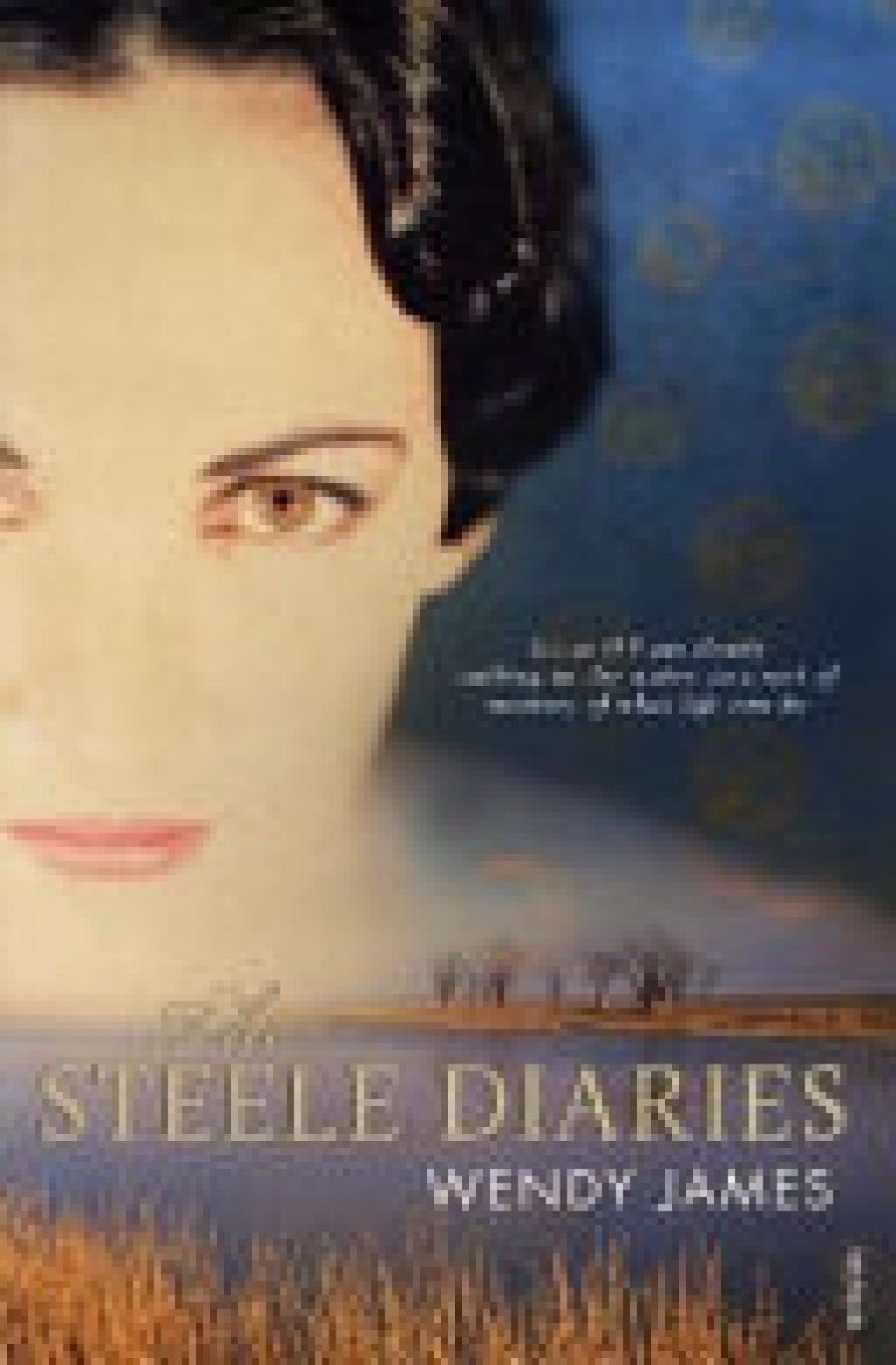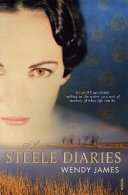
- Free Article: No
- Contents Category: Fiction
- Review Article: Yes
- Article Title: Thoroughly modernist capers
- Online Only: No
- Custom Highlight Text:
This is a novel about a mother, daughter, and granddaughter. Two of these women are artists, and the third is a medical practitioner. Wendy James explores creativity and the price it exacts, especially if the artist is a woman. James is also interested in biography, its limitations and potentially destructive effects. The title, The Steele Diaries, refers to the journals of a celebrated book-illustrator, Zelda Steele. In the 1960s, Zelda is a young mother of two, temporarily living separately from her husband when, mysteriously, she dies by drowning in the local river. This occurs just as she is fulfilling her potential as an artist. The main narrative is a first-person account by Zelda’s (now adult) daughter, Ruth, a doctor who has spent her life resenting her famous mother and modelling herself on her beloved father, Richard, the respected GP of an outback country town. Ruth’s inner journey towards an adult understanding of her mother and, thence, herself provides the central narrative. The trajectory begins immediately after her father’s death in the late 1990s, when Ruth is contacted by Douglas Grant, an international art critic and biographer of her long dead grandmother, modernist landscape painter Annie Steele. Annie was the first wife of painter Ed Steele, Australia’s most famous modernist artist. Douglas Grant, a lover of Zelda’s when they were young, is aware that she kept a journal and now wants to base a biography upon it. Grant is convinced that it must have been in Richard’s possession during the years since Zelda’s death.
- Book 1 Title: The Steele Diaries
- Book 1 Biblio: Vintage, $23.95 pb, 367 pp
- Book 1 Cover Small (400 x 600):

- Book 1 Cover (800 x 1200):

This is Wendy James’s second novel. Her first, Out of the Silence (2005), drew for its plot upon the well-known feminist history and fiction of late nineteenth-century Australia. In this book, James relies again upon her readers’ knowledge of Australian culture. Indeed, this fiction depends upon an implied reader who must be culturally informed. James’s strategy is a deliberate intertextuality, not of fiction speaking to fiction, but of history transformed into fiction. The Steele Diaries is rich with references deployed as signifiers of creative experience. Thus, Zelda’s character positively resonates with elements of feminist archetypes, Virginia Woolf and Sylvia Plath and their much-analysed suicides. The names of characters, ‘Zelda Steele’ and ‘Douglas Grant’ are verbal talismans evoking earlier real-life subjects, Zelda Fitzgerald, and Duncan Grant of the Bloomsbury circle. The character of Douglas Grant, an Australian who has become an international art critic who achieves fame when he makes a television series about the rise of modernism, reprises expatriate Australian critic Robert Hughes, while the Ed Steele character has echoes of Sidney Nolan.
James appropriates and reworks the aetiology of early modernist painting in Australia. The Heide circle at Bulleen is recreated and transposed to Sydney. Sunday and John Reid, patrons of Sidney Nolan, Joy Hester and Albert Tucker, in the novel become Jules and Paul Holland, the astonishingly generous but controlling patrons of Ed and Annie Steele. Immensely rich, childless and devoted to the cause of modernism, the Hollands formally adopt baby Zelda, Ed and Annie’s unwanted child, just as, in reality, the Reids adopted Sweeney, the son of Joy Hester and Albert Tucker. Eventually, the Hollands convert their famous home into a successful gallery, as did the Reids. Sweeney, like Zelda, died tragically young.
These patterns might sound strained or irritating, but they are not. Although we are conscious of the past reality being signalled, and possibly flattered a little by James’s faith in our cultural literacy, at the same time, we are assessing the novel’s representation of those people (and I do think that the Sunday Reid character is rather harshly judged). But James neatly sidesteps the perils of biography and the historical novel. She deflects the accusation that this is ‘bad history’ or biographical distortion by making this book so clearly a fiction. In its very limited deployment of the life stories from which its fabric is spun, James awards herself complete poetic licence to speculate and fabricate as much as she chooses. The novel then becomes an exploration of the role of women in art and the price they – and their families – pay for their creativity.
The discontinuous narrative works well, leading the reader through the layers of past desire and conflict. Occasionally, I was unsure who was ‘speaking’. There are three narratives: that of Ruth, in the first person and in the present, busy preparing her father’s house for sale and rather timorously embarking upon a new love affair. At night she is reading the diaries she has found in the attic, so that Zelda’s diary becomes the second layer of narrative. Finally, we have a third-person story of Annie’s life as a young woman. It is this last layer that puzzled me. I was unsure about its provenance. Is it Zelda speculating about her mother or is Ruth drawing upon the diaries and imagining the life of her grandmother? Or is an omniscient narrator speaking? This blurs the clarity of the narrative a little, but it is not enough to spoil the novel.
The considerable strength of The Steele Diaries is its exploration of the creative drive and its effect upon a feminine subjectivity. As Hazel Rowley suggests in her biography of Christina Stead (1993), the vulnerability of a woman artist in a patriarchal order can potentially constrain the art and make creativity harder. James also makes some perceptive comments about biographical writing and the ways in which it can be predatory and mythologising, especially in recent decades when the feminist movement has sought female heroes for its pantheon. I found The Steele Diaries most satisfying and look forward to more from Wendy James.


Comments powered by CComment